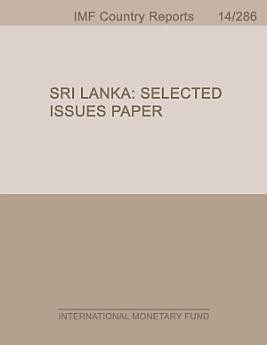Sri Lanka: Selected Issues
International Monetary Fund. Asia and Pacific Dept
Sep 2014 · International Monetary Fund
e-Buku
45
Halaman
reportRating dan ulasan tidak disahkan Ketahui Lebih Lanjut
Perihal e-buku ini
EXECUTIVE SUMMARY The first chapter on monetary policy transmission examines the channels through which innovations to policy variables—policy rate or monetary aggregates—affect such macroeconomic variables as output and inflation in Sri Lanka. The effectiveness of monetary policy instruments is judged through the prism of conventional policy channels (money/interest rate, bank lending, exchange rate, asset price channels) in VAR models, and the timing and magnitude of these effects are assessed using impulse response functions, and through the pass-through coefficients from policy to money market and lending rates. Our results show that (i) interest rate channel (money view) has the strongest Granger effect on output with 0.6 percent decrease in output after the second quarter and a cumulative 0.5 percent decline within a 3 year period in response to innovations in the policy rate; (ii) the contribution from the bank lending channel is statistically significant (adding another 0.2 percentage points to the baseline effect of policy rates) in affecting both output and prices but with a lag of about 5 quarters for output and longer for prices; (iii) the exchange rate and asset price channels are ineffective and do not have Granger effects on either output or prices. The second chapter takes a fresh look at the public debt reduction strategy. It asks two questions: (i) what has been driving the increase and subsequent decline in Sri Lanka’s public debt? (ii) Is Sri Lanka’s public debt too high, and if yes, how much, how fast and how should it be reduced? The chapter finds that, until recently, favorable interest rate-growth differential reflecting the combination of relatively high real GDP growth and low real interest rates on public debt has worked to reduce the debt ratio, even as primary deficits and occasional currency depreciation pushed the ratio in the opposite direction. More recently, however, the average borrowing costs began to increase, reflecting the reduced role of concessional financing and increased resort to market borrowing. Thus, debt reduction became more dependent on real growth and stronger primary balance, and this trend is likely to continue. The chapter documents that Sri Lanka’s public debt is one of the highest among the emerging economies, particularly when measured against the relatively low revenues, and suggests that the authorities target its gradual reduction to 50 percent of GDP, relying mainly on revenue measures. This target is more ambitious than the authorities’ medium-term objective of reducing the debt ratio to 60 percent of GDP, but it is considered by staff as prudent.
Berikan rating untuk e-Buku ini
Beritahu kami pendapat anda.
Maklumat pembacaan
Telefon pintar dan tablet
Pasang apl Google Play Books untuk Android dan iPad/iPhone. Apl ini menyegerak secara automatik dengan akaun anda dan membenarkan anda membaca di dalam atau luar talian, walau di mana jua anda berada.
Komputer riba dan komputer
Anda boleh mendengar buku audio yang dibeli di Google Play menggunakan penyemak imbas web komputer anda.
eReader dan peranti lain
Untuk membaca pada peranti e-dakwat seperti Kobo eReaders, anda perlu memuat turun fail dan memindahkan fail itu ke peranti anda. Sila ikut arahan Pusat Bantuan yang terperinci untuk memindahkan fail ke e-Pembaca yang disokong.








